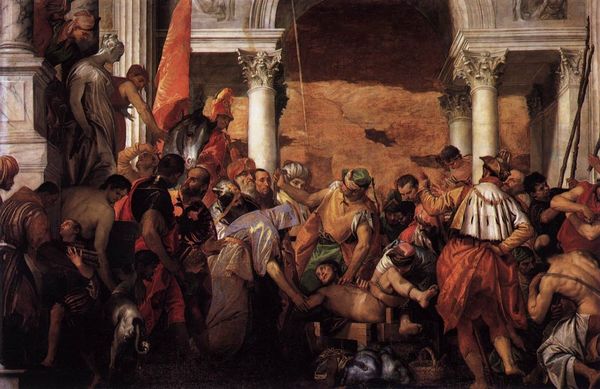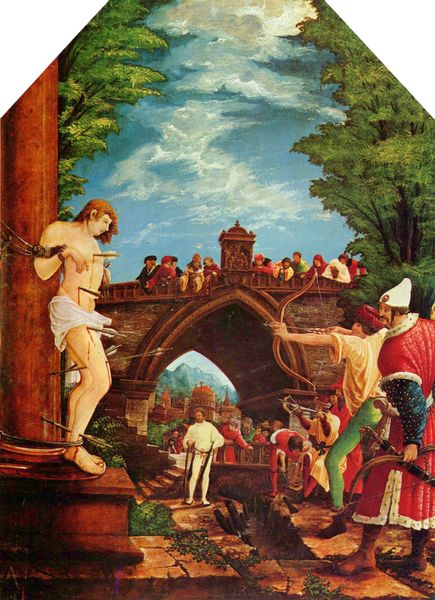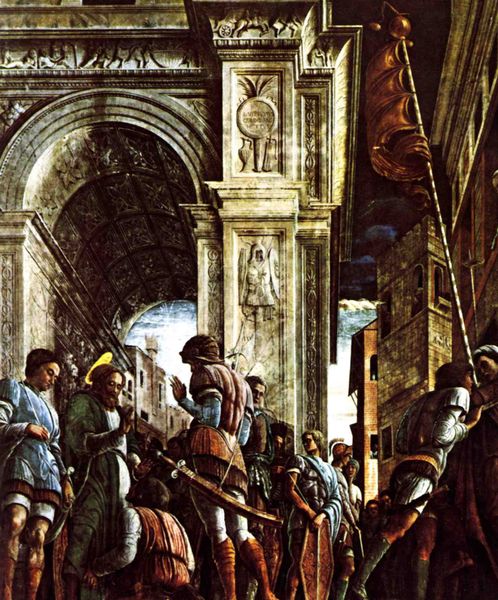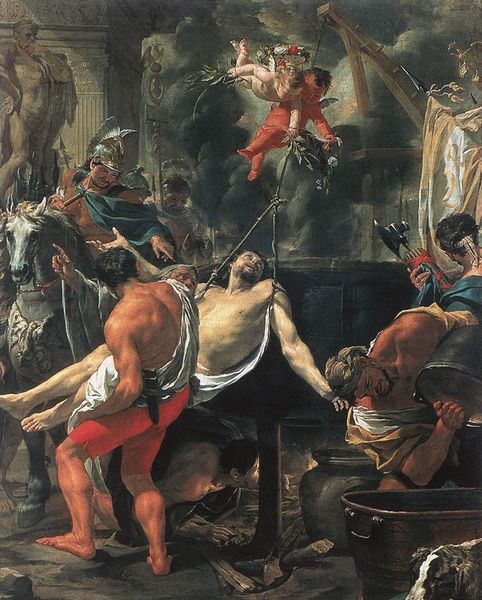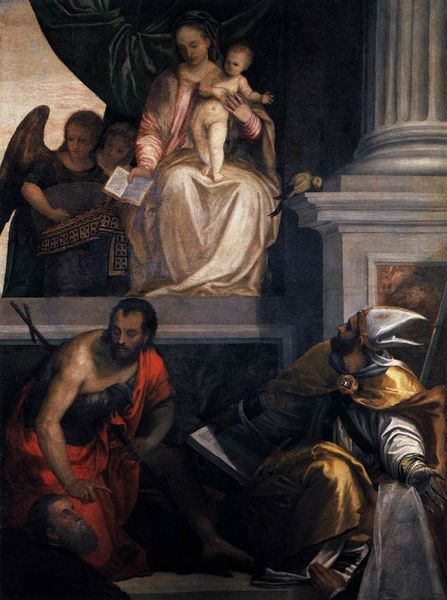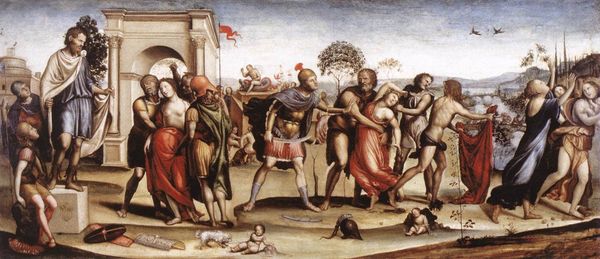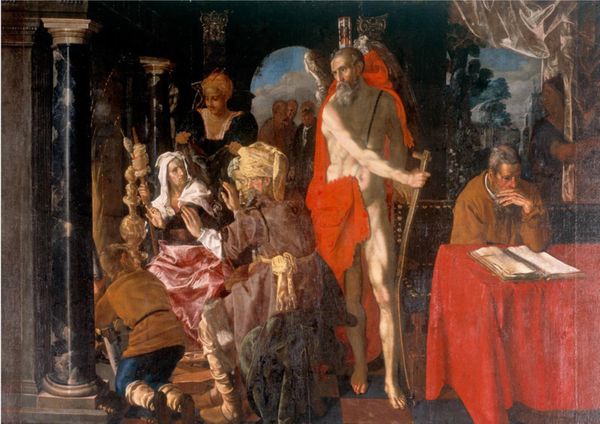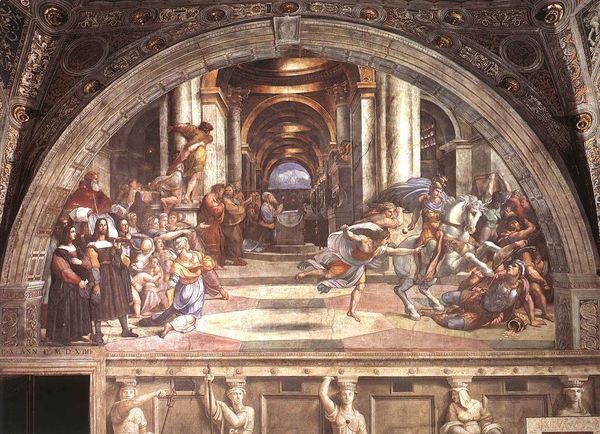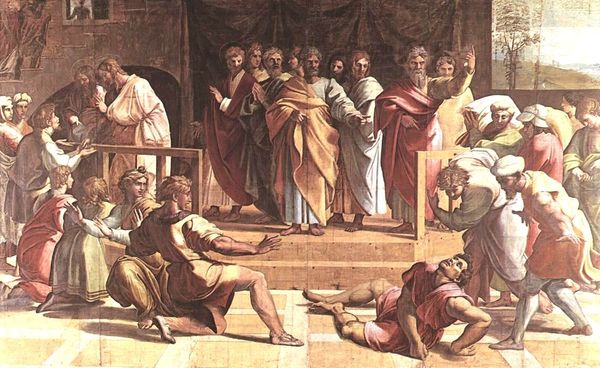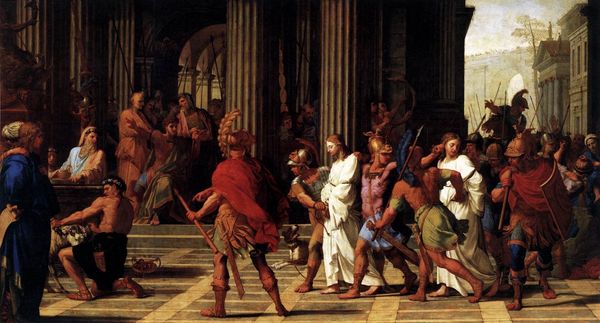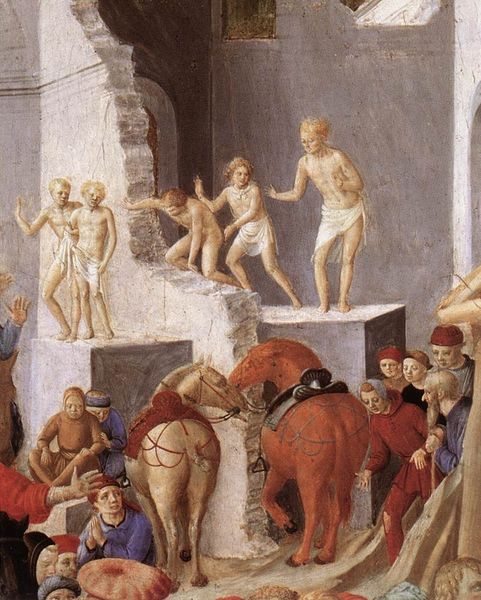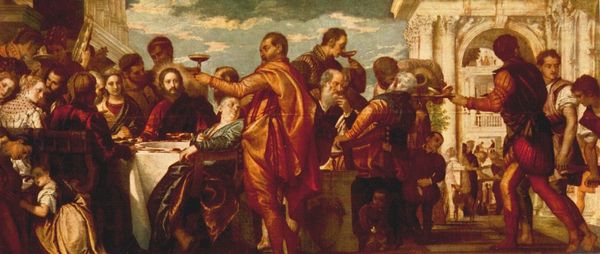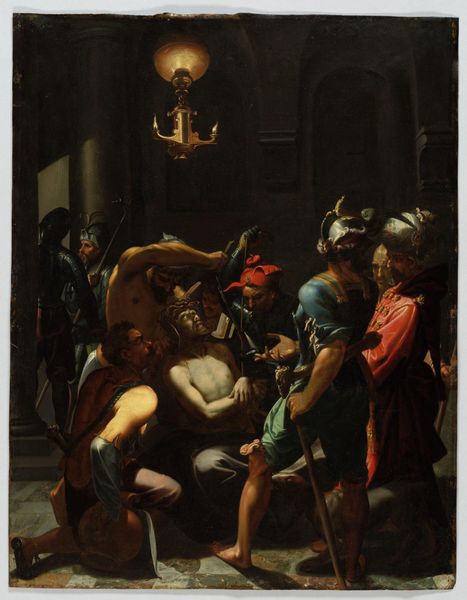
Copyright: Public domain
Editor: Albrecht Altdorfer’s “The Flagellation of Christ,” created in 1518 with oil paint, is rather striking. I’m immediately drawn to the architectural setting. It feels both grand and strangely claustrophobic, amplifying the central figure's suffering. What can you tell me about the symbols and deeper meaning in this artwork? Curator: Observe how Altdorfer positions Christ. He is bound to a column – a deliberate echo of classical Roman architecture, intended to draw a direct symbolic comparison between the might of the Roman Empire and its brutal persecution. Now consider how Christ appears almost fragile against the massive, cold stone. Does that juxtaposition strike you as meaningful? Editor: Yes, definitely. It emphasizes the power imbalance and perhaps suggests the indifference of institutions to individual suffering. But the architectural space in the background, beyond the immediate violence, feels somewhat separate. Curator: Precisely! This highlights the double nature of power; while one part revels in a spectacle of violence, the other maintains a distant, almost theatrical remove. The Renaissance architecture isn't simply decorative. It serves as a stage, with the repetition of columns serving almost as bars imprisoning him. Doesn’t that imply something about our inherited relationship to power? We still perform for the stage. Editor: I see that. It’s chilling to think about these lasting cultural memories shaping our perspectives even today. It is a brutal scene of pain, but maybe this suffering is a bridge, even a kind of stage, between one idea of power and its transformation to something new? Curator: Yes, the scene doesn’t merely represent physical torture. It symbolizes an agonizing transition, capturing the birth pangs of a new era of morality breaking free from that dominating stage. The artwork thus contains layers: brutality, yes, but also resistance, sacrifice, and hope – the potent combination that has fuelled transformations across history. Editor: Thanks, that helps unpack the power of the piece. Looking at it again, I understand that Altdorfer invites us to reflect not just on historical events but also on the ongoing tension between oppressive forces and the enduring human spirit. Curator: Indeed. Great art makes the past speak to the present, doesn't it?
Comments
No comments
Be the first to comment and join the conversation on the ultimate creative platform.
